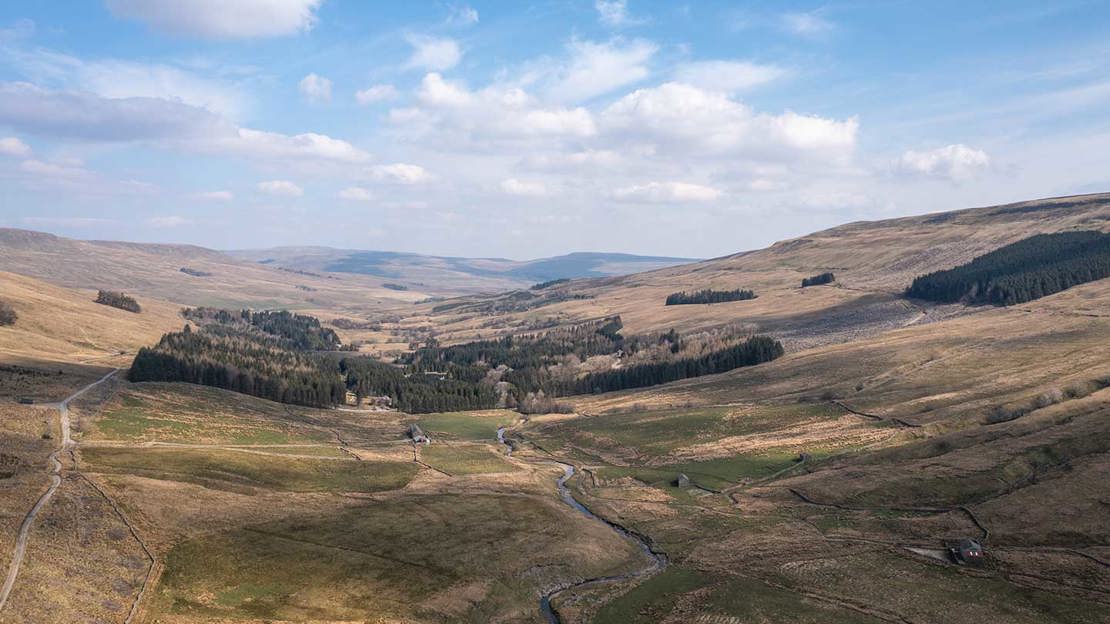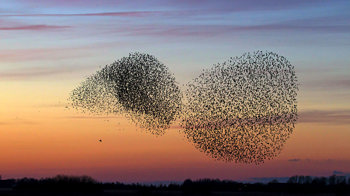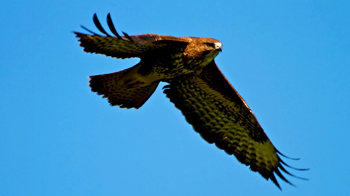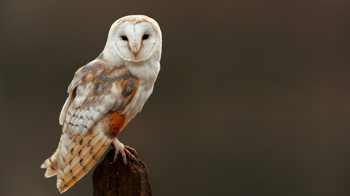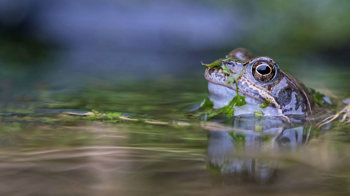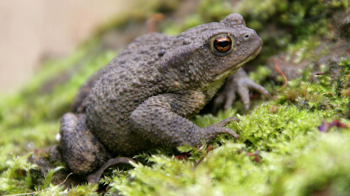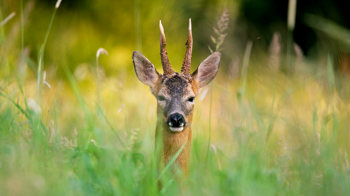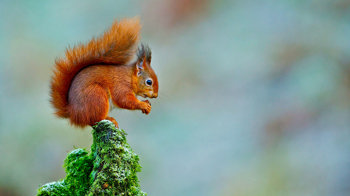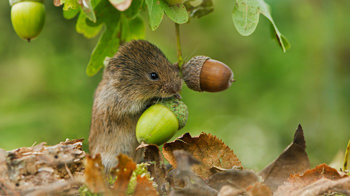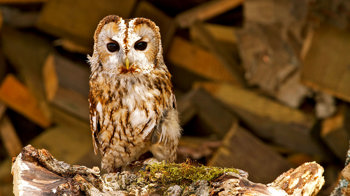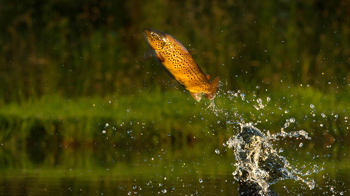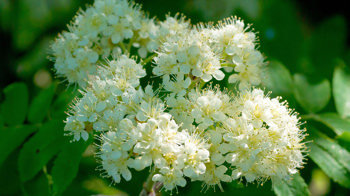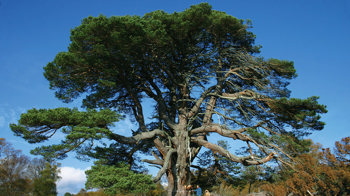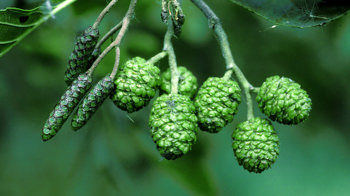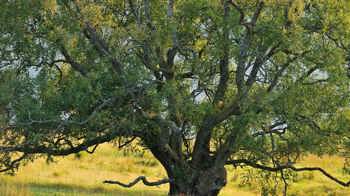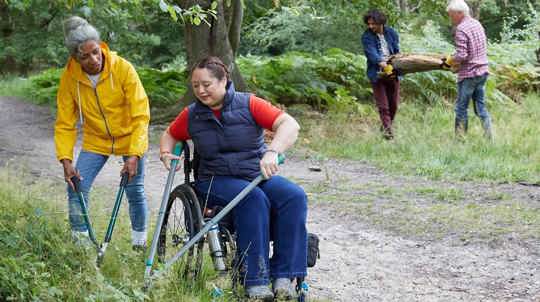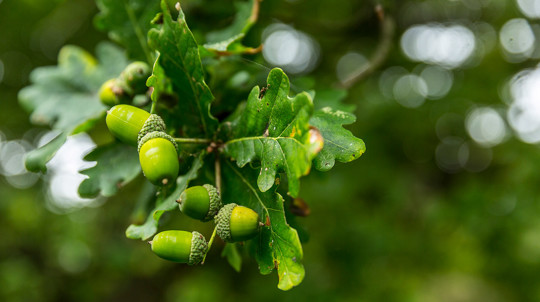Snaizeholme Estate
Wensleydale, North Yorkshire
Carved by the elements, Snaizeholme is a vast and breathtaking landscape in a remote corner of the Yorkshire Dales National Park.
Dramatic valley sides soar 1,000 feet to meet the skyline and are criss-crossed by gushing streams, as well as the Roman roads of the Pennine Way and Pennine Bridleway. Here, the terrain is challenging and the weather is wildly unpredictable, with sudden downpours shifting to sunbeams in mere moments.
Our vision for this primordial landscape is bold and exciting. Once the site of a deep, thick forest, much of this land is now bare and in sore need of trees. We are creating one of the largest new native woodlands in England, while restoring rare, fragmented habitats including peat bog, limestone pavement and riverside meadows to their former glory. Nurturing this precious mosaic of vibrant habitats will support threatened native wildlife, from red squirrel to curlew.
Features
- Good views
- Spring flowers
How to get to Snaizeholme Estate
Snaizeholme lies 6.4km (4 miles) southwest of the market town of Hawes, home of the Wensleydale Creamery, and 32.2km (20 miles) north of the town of Settle. If driving from Settle, you can pass through the small village of Horton-in-Ribblesdale and by the famous Ribblehead Viaduct in the Yorkshire Dales National Park.
Access to Snaizeholme Estate by car is via the B6255 along Snaizeholme Road, which follows 3.2km (2 miles) of rough, single-track road with limited passing places. This road also gives access to a number of other private properties, including the red squirrel trail where two parking spaces are available to pre-book.
You can find details of the red squirrel trail and how to book parking by visiting the Yorkshire Dales red squirrel trail website.
Settle train station is 31.7km (19.7 miles) from Snaizeholme.
From Settle, you can travel by bus. Please visit the Yorkshire Dales National Park website to find out more about travel by bus.
Please visit National Rail for more information about train travel.
The Little White Bus from the National Park Visitor Centre in Hawes stops at the Red Squirrel Trail, which is adjacent to Snaizeholme.
To find out more about travel by bus from Settle, please visit the Yorkshire Dales National Park website.
Please visit Traveline for more information.

Facilities and access
Access to Snaizeholme Estate is via the B6255 along Snaizeholme Road, which follows 3.2km (2 miles) of rough, single-track road with limited passing places. This road also gives access to a number of other private properties, including the red squirrel trail where two parking spaces are available to pre-book.
You can also access the site on foot or by bicycle along the Pennine Bridleway from the end of Cam Road, which is another 3.2km (2 miles) of single-track road with limited passing places. There is some parking available (6-10 cars) at the junction of Cam Road with the Pennine Way. The Pennine Bridleway passes through the southwest of Snaizeholme, across Grove Head on a gravel track. Access down into the valley of Snaizeholme is not recommended from here, as the terrain is extremely challenging with hidden shake holes and no pathways.
It is possible to walk to Snaizeholme Estate from Hawes primarily along footpaths, although some road sections are unavoidable if you are following a circular route in the valley.
Parking is very limited at Snaizeholme Estate. There is no formal parking available apart from two spaces at the red squirrel trail. These must be pre-booked via the National Park Visitor Centre in Hawes.
Unfortunately there are no toilet facilities at this site. The nearest available facilities are adjacent to the National Park Visitor Centre in Hawes.
Wildlife and habitats
Animals
Snaizeholme is teeming with diverse wildlife, including some specialist bird species. The moorland echoes with the distinct calls of the curlew, black grouse, and red grouse, while the mournful 'cheewit' wit of the lapwing joins the warbling song of the skylark in the valley. At the water's edge, oystercatcher, sandpiper, dipper, snipe, grasshopper warbler and reed bunting create a raucous chorus. The barns are popular with kestrel, house martin and swift, as well as barn and tawny owls which hunt for weasels, voles, common shrews, moles and rabbits in the grasslands.
Scampering red squirrels are also a common sight in the mixed conifer woods in and around Snaizeholme Estate, while trout, white-clawed cray fish and otter have also been spotted in Snaizeholme Beck.
Look out for:
Trees, plants and fungi
Atop the valley slopes, we are planting montane shrub species including dwarf birch, eared willow, creeping willow and bay leaved willow. These short, hardy trees thrive in tough upland conditions, and provide natural protection from rockfall and flooding by stabilising steep slopes and slowing the flow of water downstream.
Elsewhere, look out for broadleaved native trees such as willow, rowan, alder, aspen, birch and oak. In spring, blackthorn and hawthorn burst into blossom, while evergreen Scots pine provide a splash of colour even in the stark winter months.
Look out for:
Habitats
Riverside pasture, wooded valley sides, peat bogs and limestone pavement create a diverse mix of vital habitats for wildlife at Snaizeholme.

Credit: Dennis Johnson / WTML
Tree planting
Much of Snaizeholme would once have been forested – the neighbouring valley is called Widdale, which directly translates to ‘wooded valley’ in Old Norse.
We've planted almost 291 hectares (719 acres) with mixed native tree saplings, creating one of the largest new native woodlands in England, which will grow to support many native species such as rare red squirrels.

Credit: WTML / Paul Barker
Peatland
Snaizeholme Estate boasts more than 270 acres of upland peat bog. In the past, this delicate and fragmented habitat has been dried out by drainage channels, causing soil erosion. Our careful restoration work will revive the peat bog to a healthy state, so it can act as a carbon sink and absorb rainfall like a huge sponge. We hope this will minimise flood risk further down the valley.

Credit: Amy Lewis / WTML
Snaizeholme Beck
A whopping 21 streams feed into Snaizeholme Beck, so slowing the rush of water is vital work which can reduce the impact of flooding downstream in areas such as York. We are working towards slowing the flow of water by re-naturalising areas of Snaizeholme Beck, which will also enhance this habitat for aquatic life such as white-clawed crayfish and otter.

Credit: WTML / Paul Barker
Limestone outcrops
Sat just above the peat bog are two large areas of fossil-rich limestone pavement. These pastures are dotted with the vibrant blooms of delicate mountain pansies, and benefit from seasonal grazing by cattle. They are also havens for ground nesting birds such as golden plover, and are sometimes visited by neighbouring populations of black grouse, a rare and endangered species that will benefit greatly from our work in the valley.

Credit: Jill Jennings / WTML
Drystone walls
The extensive network of old dry stone walls at Snaizeholme offers perfect refuge for small mammals and common lizards. We will maintain walls with a variety of conditions, from sun-drenched crevices to deeply sheltered nooks. This will provide vital wildlife corridors, while preserving the unique character of the landscape and effectively managing livestock within our pastures.
Explore:
History of Snaizeholme Estate
Snaizeholme is steeped in fascinating history. The origins of its name are uncertain, although it is thought to be Norse for water meadow with twigs (with ‘Snesis’ meaning twig).
The valley was first recorded in 1280 as Snaysum or Snaysome, and formed part of the vast Forest of Wensleydale. Its landscape has changed dramatically over time, with thick forests felled by land use practices. This is true for much of the Yorkshire Dales, where tree cover is very low at 5%.
Snaizeholme Estate was acquired by the Woodland Trust in 2021. We began habitat restoration work right away, beginning with an extensive consultation with the local community, landowners and various agencies and organisations to ensure the best design and work programme going forward.
We are currently working in close partnership with the universities of Leeds and York to record and monitor changes on site as the landscape evolves, with a focus on water retention and soil changes over time. By collecting this cutting-edge data, we can show the impact our work has on Snaizeholme’s wildlife and natural environment, with the goal of using this as a blueprint for other sites in the future.
Things to do
Look out for volunteering opportunities across Snaizeholme Estate, helping us to carry out practical conservation tasks to boost the health of this spectacular landscape.
For a chance to spot red squirrels leaping acrobatically in the treetops, you can also visit the neighbouring red squirrel trail, which has two parking spaces available to pre-book via the National Park Visitor Centre in Hawes.
Other woods nearby






